- Clone
- G28 (See other available formats)
- Regulatory Status
- RUO
- Other Names
- CD8a, T8, Leu-8, Ly-2, Lyt2
- Isotype
- Mouse IgG2a, κ
- Ave. Rating
- Submit a Review
- Product Citations
- 5 publications
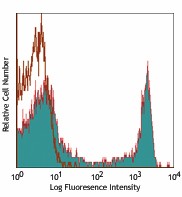
| Cat # | Size | Price | Quantity Check Availability | Save | ||
|---|---|---|---|---|---|---|
| 200607 | 50 µg | 94€ | ||||
| 200608 | 200 µg | 259€ | ||||
CD8a is a 32 kD glycoprotein also known as T8, Lyt2, Ly-2, and CD8α. CD8a is a member of the immunoglobulin superfamily expressed on most thymocytes, subset of mature T cells, most NK cells, macrophages, and some activated CD4+ T cells (not resting). CD8a forms heterodimers with the CD8β chain (CD8b) on the surface of most thymocytes, while mature peripheral T lymphocytes express almost exclusively the CD8 αβ heterodimer. Intestinal intraepithelial lymphocytes express CD8a without CD8b. CD8 is an antigen co-receptor on T cells that interacts with MHC class I on antigen-presenting cells or epithelial cells. CD8 participates in T cell activation through its association with the T cell receptor complex and protein tyrosine kinase lck (p56lck).
Product DetailsProduct Details
- Verified Reactivity
- Rat
- Antibody Type
- Monoclonal
- Host Species
- Mouse
- Immunogen
- CD8+ Wistar rat splenic T cell hybridomas
- Formulation
- Phosphate-buffered solution, pH 7.2, containing 0.09% sodium azide.
- Preparation
- The antibody was purified by affinity chromatography, and conjugated with PE under optimal conditions.
- Concentration
- 0.2 mg/ml
- Storage & Handling
- The antibody solution should be stored undiluted between 2°C and 8°C, and protected from prolonged exposure to light. Do not freeze.
- Application
-
FC - Quality tested
- Recommended Usage
-
Each lot of this antibody is quality control tested by immunofluorescent staining with flow cytometric analysis. For flow cytometric staining, the suggested use of this reagent is ≤0.25 µg per million cells in 100 µl volume. It is recommended that the reagent be titrated for optimal performance for each application.
- Excitation Laser
-
Blue Laser (488 nm)
Green Laser (532 nm)/Yellow-Green Laser (561 nm)
- Application Notes
-
Additional reported applications (for the relevant formats) include: immunoprecipitation1, blocking1 of allogeneic responses, and immunohistochemical staining of acetone-fixed frozen sections. The LEAF™ purified antibody (Endotoxin <0.1 EU/μg, Azide-Free, 0.2 μm filtered) is recommended for functional assays (Cat. No. 200612).
- Application References
-
- Torres-Nagel N, et al. 1992. Eur. J. Immunol. 22:2841.
- Xie L, et al. 2014. J Immunol. 192:6009. PubMed
- Product Citations
-
- RRID
-
AB_313878 (BioLegend Cat. No. 200607)
AB_313879 (BioLegend Cat. No. 200608)
Antigen Details
- Structure
- Ig superfamily, CD8α chain
- Distribution
- Most thymocytes, T cell subset; activated CD4+ T cells (not resting), most NK cells and intestinal intraepithelial cells express the CD8α chain without the CD8β chain
- Function
- Co-receptor for TCR
- Ligand/Receptor
- MHC class I molecule
- Cell Type
- Thymocytes, T cells, NK cells, Epithelial cells
- Biology Area
- Immunology
- Molecular Family
- CD Molecules
- Antigen References
-
1. Brideau RJ, et al. 1980. Eur. J. Immunol. 10:609.
2. Dallman MJ, et al. 1982. Eur. J. Immunol. 12:511.
3. Cantrell DA, et al. 1982. Immunol. 45:97.
4. Lyscom N, et al. 1982. Immunol. 45:775.
5. Johnson P, et al. 1985. EMBO. J. 4:2539.
6. Barclay AN. 1981. Immunol. 42:593. - Gene ID
- 24930 View all products for this Gene ID
- UniProt
- View information about CD8alpha on UniProt.org
Related FAQs
- What type of PE do you use in your conjugates?
- We use R-PE in our conjugates.
Other Formats
View All CD8a Reagents Request Custom Conjugation| Description | Clone | Applications |
|---|---|---|
| APC anti-rat CD8a | G28 | FC |
| PE anti-rat CD8a | G28 | FC |
Customers Also Purchased
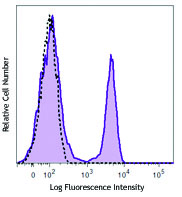
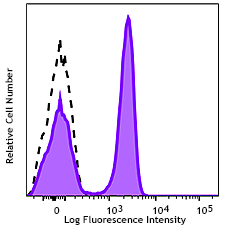
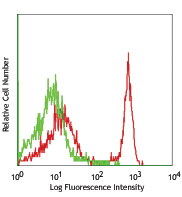

Compare Data Across All Formats
This data display is provided for general comparisons between formats.
Your actual data may vary due to variations in samples, target cells, instruments and their settings, staining conditions, and other factors.
If you need assistance with selecting the best format contact our expert technical support team.
-
APC anti-rat CD8a
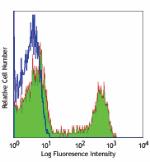
LOU rat splenocytes stained with G28 APC -
PE anti-rat CD8a
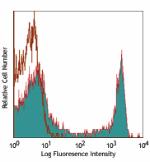
LOU rat splenocytes stained with G28 PE

 Login / Register
Login / Register 


















Follow Us